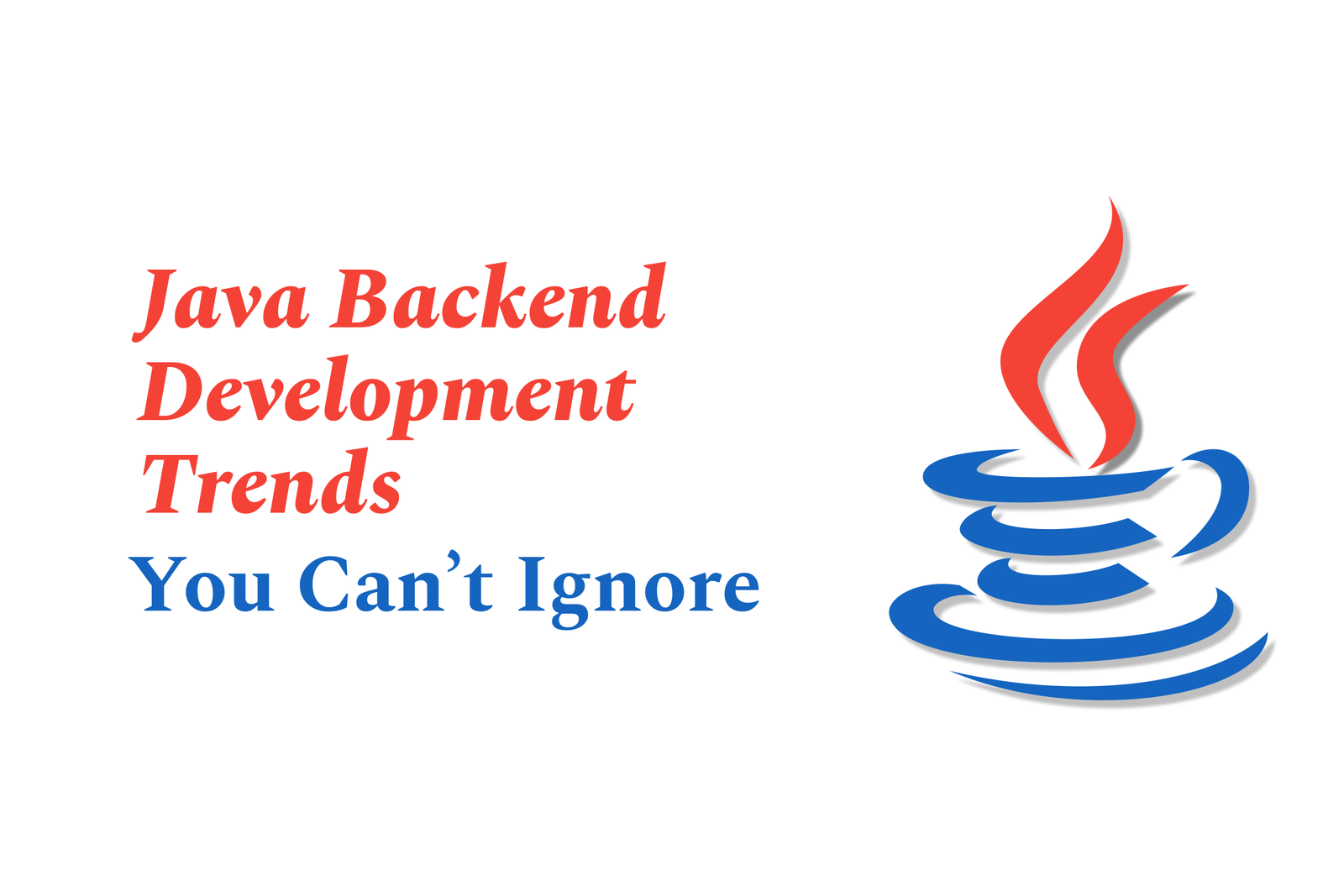Java Backend Development Trends You Can?T Ignore
Java backend development is evolving rapidly with trends like cloud-native apps, microservices, reactive programming, and serverless architectures. Embracing modern Java features, AI integration, strong security, and automation is essential to build scalable, efficient, and future-ready backend systems.
Java Backend Development Trends You Can’t Ignore
1 ) Rise of Cloud Native Java Development
Cloud computing has become mainstream, and Java backend development is increasingly shifting toward cloud native architectures. Developers leverage containerization (e.g., Docker), orchestration tools like Kubernetes, and cloud services from AWS, Azure, and Google Cloud to create scalable, resilient backend systems.
2 ) Microservices and Modular Architectures
Breaking monolithic Java applications into microservices enhances flexibility, scalability, and maintainability. Java frameworks such as Spring Boot and Quarkus facilitate creating lightweight, container friendly microservices, making it easier to develop and deploy independently deployable components.
3 ) Reactive Programming and Non Blocking APIs
To meet demands for highly concurrent and responsive applications, reactive programming is gaining ground in Java backend development. Frameworks like Project Reactor and Vert.x allow developers to build non blocking, event driven services that improve performance under heavy load.
4 ) Adoption of Modern Java Features
New Java versions introduce powerful features like records, sealed classes, pattern matching, and improved concurrency utilities. Backend developers are increasingly embracing these to write cleaner, more efficient code, reducing boilerplate and enhancing readability.
5 ) Serverless Backend Development
Serverless computing is influencing Java backend trends, enabling developers to build functions triggered by events without managing server infrastructure. Frameworks and platforms now support Java for serverless deployments, helping optimize resource usage and cost.
6 ) Integration of AI and Machine Learning Services
Java backends are incorporating AI/ML capabilities either by integrating with external AI services or embedding lightweight machine learning models. This trend reflects broader AI adoption in backend workflows like data processing, recommendation engines, and predictive analytics.
7 ) Focus on Security and Compliance
As cyber threats evolve, Java backend developers prioritize secure coding practices, API security, and compliance with data protection regulations. Tools for automated security testing and frameworks supporting OAuth, JWT, and encryption are becoming essential parts of the backend development process.
8 ) Low Code/No Code Backend Tools for Java
To accelerate development and democratize software creation, low code and no code platforms that generate Java backend components are gaining attention. These tools help teams rapidly prototype and deliver backend services, reducing time to market.
9 ) Increased Use of Automation and CI/CD Pipelines
Automation through CI/CD pipelines ensures faster, more reliable deliveries of Java backend applications. Developers are adopting tools like Jenkins, GitHub Actions, and GitLab CI along with container registries and automated testing frameworks to streamline deployment cycles.
10 ) Growing Emphasis on API First Development and GraphQL
REST APIs remain dominant, but API first development practices and GraphQL adoption are rising to deliver more flexible and efficient data fetching mechanisms for Java backends. This trend enables better client server interactions and supports modern frontend needs.
These trends collectively underscore the evolving practices in Java backend development, emphasizing scalability, agility, modern programming paradigms, and integration with emerging technologies to meet today’s dynamic enterprise requirements.
https://justacademy.in/news-detail/android-apps-leveraging-machine-learning
https://justacademy.in/news-detail/android-app-localization-trends
https://justacademy.in/news-detail/ios-app-performance-optimization-tips
https://justacademy.in/news-detail/major-companies-adopting-flutter-in-2025
https://justacademy.in/news-detail/desktop-apps-in-flutter:-pros-and-cons
Related Posts
In 2025, top Angular libraries offer modern, feature-rich components and tools for building dynamic web apps. From powerful data grids to low-code platforms like UI Bakery, these libraries enhance development speed, UI design, and scalability, making them essential for Angular developers.
Migrating from AngularJS to Angular 17 involves gradually upgrading your app by running both frameworks together using tools like ngUpgrade, rewriting components in TypeScript, and adopting Angular’s modern architecture to enhance performance, maintainability, and long-term support.
Angular state management tools help organize and handle app data efficiently, improving scalability and maintainability. Popular options include NgRx for robust, RxJS-based patterns, and newer Signal Store solutions that offer simpler, reactive approaches integrated tightly with Angular’s latest features.
RxJS in Angular empowers developers to manage asynchronous data streams with powerful operators like `forkJoin`, `combineLatest`, and `zip`. Mastering these key operators in 2025 is essential for building efficient, reactive applications that handle complex event sequences seamlessly.
Angular performance optimization in 2025 focuses on improving app speed and responsiveness by using techniques like OnPush change detection, lazy loading, efficient data caching, and AOT compilation. These practices reduce load times, enhance user experience, and ensure scalable, fast Angular applications.
In 2025, Angular remains preferred for large-scale, enterprise apps with its robust, all-in-one framework, while Vue attracts developers seeking simplicity and fast development for smaller projects. Both frameworks excel, with choice driven by project needs and team expertise.
Angular Signals are a new reactive primitive in Angular 16 that enable fine-grained, efficient change detection by automatically tracking dependencies and updating only affected parts of the UI. They simplify state management and boost app performance, revolutionizing Angular's reactivity model.
Angular interview questions to prepare in 2025 focus on core concepts like components, directives, data binding, routing, and dependency injection, along with TypeScript mastery and latest Angular features to ensure strong practical knowledge for building scalable, efficient web applications.
AngularJS reached its official end of support in January 2022, meaning no further updates or security patches. To ensure app security and performance, developers should consider migrating to modern Angular versions or seek third-party long-term support options if immediate migration isn’t possible.
The Angular Roadmap 2025 highlights upcoming features focused on improving developer experience and performance, including zoneless Angular, Signals integration, enhanced Forms, async data handling, improved HMR, and expanded Angular Material/CDK enhancements, driving modern, efficient web app development.










